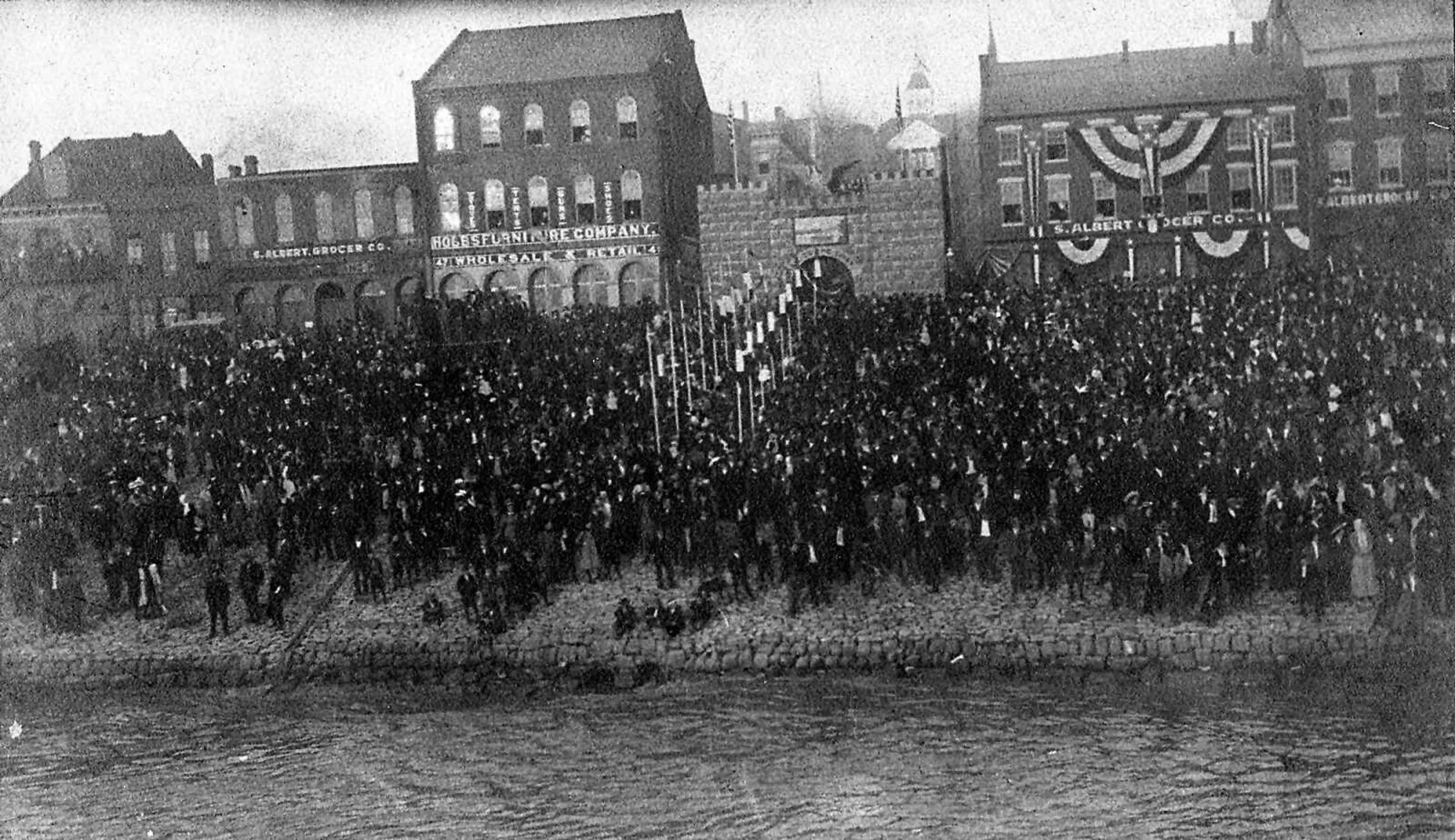This is the 15th in a series of articles with Kellerman Foundation for Historic Preservation board chairman Frank Nickell, an emeritus faculty member of Southeast Missouri State University, commenting on Show Me State history on the 200th anniversary of Missouri being received as America's 24th state in 1821.
U.S. President William Howard Taft was the first Oval Office occupant ever to visit Cape Girardeau.
The date was Tuesday, October 26, 1909.
"(Taft) was here for about an hour, arriving just after 6 a.m., and it was a very big deal for a city that had, at the time, less than 5,000 residents," said Nickell, who added that an estimated 25,000 people came to see America's 27th president at the Cape Girardeau waterfront.
Big Ed Regenhardt
Much of the credit for getting Taft's steamboat to stop in Cape Girardeau goes to a personal friend of the president, Edward "Big Ed" Regenhardt (1867-1926).
Regenhardt was a Cape Girardeau construction contractor and quarry owner whom Nickell said was instrumental in the building of the current Academic Hall at Southeast.
"Taft was a big man, in excess of 300 pounds, and he used to say Regenhardt was bigger than him," Nickell said.
Regenhardt was apparently taller than Taft, for sure, standing 6-foot-5, and had written to Taft — who had been inaugurated earlier in the year — and invited him to stop.
A landmark day
In the days before television and before movie newsreels were shown in theaters, the brief visit of a president "was a very big deal," Nickell said.
School kids were given the day off to ensure they could attend.
"Theodore Roosevelt (Taft's predecessor) had once come past Cape Girardeau on the river at night on his way to Cairo, Illinois, but didn't stop," Nickell said.
Since Taft, four other presidents have visited Cape Girardeau, either while in the White House or during a campaign: Ronald Reagan, Bill Clinton, Barack Obama and, most recently, Donald Trump.
Reason for the trip
Taft's journey from St. Louis to New Orleans — with a first stop in Cape Girardeau — was sponsored by the Lakes-to-Gulf Deep Waterway Association.
"The association wanted a 9-foot navigation channel on the Mississippi River because steamboats were getting bigger and heavier and some of them were dragging the bottom of the riverbed," said Nickell, noting there were sometimes accidents and disasters along the Mississippi as a result.
Taft agreed to make a speech in New Orleans as Congress was being lobbied to appropriate funds to deepen the navigable river channel.
Washington on the river
A 17-steamboat flotilla came down the Mississippi with Taft in the lead boat, named Oleander.
Aboard the boats were much of official Washington.
"Think of the passenger list — governors from 30 states, 177 members of Congress, members of the U.S. Supreme Court, Cabinet officers, foreign ambassadors," Nickell said.
Neely's Landing
"The story is circulated that as the boats came down the Mississippi, people from Neely's Landing, 17 miles from Cape, called friends to say the flotilla had just passed and to get ready," Nickell said.
Nickell said he imagined every telephone in Cape Girardeau was ringing between 4:30 and 5 a.m. with news of Taft's imminent arrival.
Cape's spurt of growth
"Cape was a notably smaller town than nearby Cairo in those days, but it was fast-growing in the decade in which Taft stepped off at Cape's wharf," Nickell said.
Indeed, according to previous reporting by the Southeast Missourian, Cape Girardeau grew by more than 76% between 1900 and 1910.
"(Southeast) had expanded, the new Academic Hall having been dedicated just three years earlier and people had discovered Cape though visiting by train during the 1904 World's Fair in St. Louis," explained the noted historian.
The speech
Taft was greeted at the waterfront by six Ford automobiles that transported him and other dignitaries to Academic Hall, where he made a 20-minute speech.
"Taft also planted a tree in the lawn at the college, but it later died," Nickell said.
The atmosphere
Nickell said two Cape Girardeau sisters, both of whom later became noted university professors, were present that fall day in 1909.
"One of them told me people were on top of rooftops and looking out windows, trying to get a glimpse of an American president," he recalled.
There were bands playing music, a Wild West show and cowboys on horses providing ad hoc security for Taft," Nickell said.
Soon it was over, the dignitaries reboarded the steamboats and headed down the river, ending, Nickell reports, one of the most important days in Cape Girardeau's history to that point.
Memories
In the wake of Taft's visit, Oct. 26 began to be called "Taft Day" in Cape Girardeau with annual celebrations and speeches about the president's hour-long visit, until after World War I.
Connect with the Southeast Missourian Newsroom:
For corrections to this story or other insights for the editor, click here. To submit a letter to the editor, click here. To learn about the Southeast Missourian’s AI Policy, click here.










